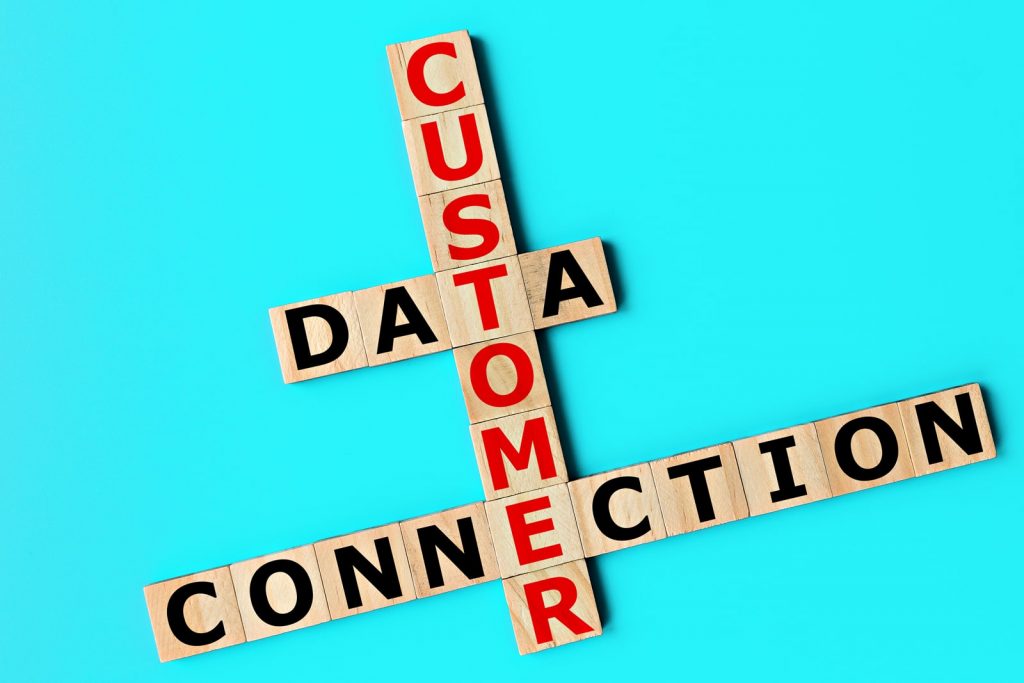On a leisurely afternoon as you motivate yourself to place an order online, you least expect to get consumed with the unlimited options thrown at your search. As an online shopper, you want the entire experience, from discovering the perfect product to making the purchase, to flow effortlessly. And let’s not forget, discounts, and offers that can make or break a deal for you.
Today’s consumers are spoilt for choices like never which had made it difficult for businesses to onboard customers and keep pace with their shifting preferences. All your actions boil down to delivering superior experiences, value, and growth for customers. It is perhaps why customer experience (CX) has become the biggest differentiator for businesses.
CX has emerged as a crucial factor if not more important than—the products and services you provide. At a time when customers share their experiences for good or bad with a click of a mouse, it is important for companies to connect with customers across their journeys at an emotional level.
McKinsey research emphasizes the need to deliver CX for customers across the journeys as it results in 3x returns to shareholders.
In today’s highly competitive landscape, standing out from competitors is essential, and a positive customer experience (CX) is a powerful way to achieve that. With numerous brands vying for public attention and an abundance of options available, CX becomes the differentiating factor that puts your product and brand in the spotlight. To drive customer acquisition, foster customer loyalty, boost customer engagement, and fuel growth, brands must prioritize the delivery of exceptional experiences and find dynamic ways to connect with their customers.
Businesses found a unique opportunity during the pandemic as marketers tried to establish meaningful connections with customers. In crisis time, many companies enhanced their CX to tap into the primary needs for safety, security, and convenience. E-commerce companies and food delivery services revamped their services to offer contactless delivery to ensure the safety of both customers and drivers as the virus spread.

Here’s What You Will Learn in This Blog
- What’s CX strategy?
- How to devise a CX strategy?
- Customer Journey Mapping to gauge CX
- What is Customer segmentation?
- What is Customer Journey Mapping?
- Why should you create a Customer Journey Mapping?
- How to create Customer Journey Mapping?
- How to train and support your agents?
- Know how to leverage technology to spruce CX
- What are the four categories of customer analytics to drive CX?
What’s CX strategy?
A customer experience (CX) strategy serves as a comprehensive plan to provide positive experiences at every touchpoint and cultivate long-term customer relationships. This strategy encompasses both online and offline interactions, offering a holistic view of the customer journey. It involves understanding the customer’s profile, identifying pain points along their journey, and outlining how to address those issues effectively.
Once an organization recognizes the value of building a customer experience strategy, it is crucial to rally support. Encouraging enthusiasm among department heads and company leaders for the customer experience and highlighting its importance is essential. When CX becomes a priority for top-level managers, it naturally permeates throughout the organization.
How to devise a CX strategy?
Firstly, it is important to identify customer experience champions within the company who can provide valuable feedback, assist in executing and refining the customer experience strategy, and help emphasize the significance of CX across the entire organization.
The best way to start is to conduct team meetings, webinars, and events to facilitate knowledge sharing and address any queries related to the overall customer experience. Next, businesses need to gain a deeper understanding of the customer base. It is not necessary that all customers embrace a brand, its products, or its services with the same ethos. It makes more sense to study the existing customer base, especially long-term customers who bring substantial value. Organizations can tailor their efforts and deliver personalized experiences that resonate with these brand advocates.
This can be attained through customer segmentation which means dividing your customers into distinct groups based on shared characteristics. This can help create targeted marketing strategies that address customers’ unique needs and preferences.
It may mean digging deeper by creating customer profiles (sometimes called personas) of your ideal buyers based on your current data. Such profiles will segment customers based on key demographic information (age, location, job title, etc.) as well as buying habits and pain points. These set customer profiles can now work as a shared reference point across your company so everyone is on the same page.
Also, keep looking for fresh segmentation that might find value in what you’re offering and what might prompt them to connect with you. You may be surprised to discover an untapped audience.

Customer Journey Mapping to gauge CX
To be able to measure customer experience you need to create a customer journey that describes the customer’s end-to-end experience. It can include events that occur before, during, or after the customer experiences a given product or service. A few examples of customer journeys include bringing a new customer on board, resolving a technical issue, or upgrading a product.
However, it is also important to understand that all customers are not the same. They possess diverse goals, preferences, behaviors, and backgrounds that shape their decisions and experiences.
Therefore, segmenting customers into meaningful groups is essential for creating effective journey maps that accurately represent their uniqueness and diversity. By recognizing and understanding the distinct characteristics, preferences, and behaviors of different customer segments, businesses can create journey maps that accurately depict the varied experiences customers have throughout their interactions.
What is Customer segmentation?

Customer segmentation is the process of dividing a customer base into smaller, more homogeneous groups based on shared characteristics such as demographics, psychographics, lifestyle, behavior, or needs. This segmentation enables businesses to tailor their marketing, sales, and service efforts to each group, resulting in improved relevance, engagement, and customer retention. It also helps identify new opportunities, uncover gaps, and optimize resource allocation.
To segment customers for journey mapping, there are several approaches depending on your objectives, available data, and resources. One option is to utilize existing data from your customer relationship management (CRM) system, analytics platforms, surveys, or social media to create segments based on quantitative factors like age, gender, location, income, purchase history, or channel preferences. This data-driven approach allows for objective segmentation based on observable patterns.
It is ideal that you select segmentation criteria that are most relevant and meaningful for your specific business and customer base.
What is Customer Journey Mapping?
Customer Journey Mapping is a valuable tool for understanding the customer experience and their interactions with your business at different stages. Its purpose is to identify and eliminate obstacles, making the process more efficient and intuitive. By mapping the end-to-end customer journey, businesses can gain insights into channel performance, customer engagement, and customer needs. Effective customer journey mapping is essential for achieving the right solutions and ensuring a positive customer experience.

Why should you create a Customer Journey mapping?
It is best that to create a customer journey mapping to track the success of customer interactions. This map will divide the buyer’s journey into different stages -awareness, interest, purchase, experience, and brand loyalty and give you a picture of the customer’s experience with your product and help you understand if there is room for improvement in your customer experience.
How to create Customer Journey Mapping?
1. Use customer journey map templates: Utilize pre-designed templates or frameworks as a starting point to structure your customer journey map. These templates provide a visual representation of the customer journey and help organize the various elements.
2. Set clear objectives for the map: Determine the specific goals you want to achieve with the customer journey map. This could include improving customer satisfaction, identifying pain points, or optimizing touchpoints for better conversions.
3. Profile your personas and define their goals: Develop detailed profiles of your customer personas, considering their demographics, behaviors, needs, and preferences. Understand their goals and motivations at each stage of the journey.
4. Highlight your target customer personas: Identify the primary target customer personas that align with your business objectives. Focus on understanding their unique characteristics and expectations to tailor the journey map to their specific needs.
5. List out all touchpoints: Map out all the touchpoints where customers interact with your business, both online and offline. This can include website visits, social media interactions, customer support calls, physical store visits, and more. Identify all the relevant touchpoints along the customer journey.
6. Determine the resources you have and the ones you’ll need: Assess the resources available to create an accurate customer journey map. Consider the data and insights you already possess, such as customer feedback, analytics, and CRM data. Identify any additional resources or research you may need to fill gaps in your understanding.
7. Take the customer journey yourself: Put yourself in the shoes of the customer and go through the entire journey yourself. This firsthand experience will provide valuable insights and help identify pain points or areas of improvement.
8. Make the necessary changes: Based on your observations and insights, make the required adjustments to the customer journey map. Identify areas where you can enhance the customer experience, streamline processes, or address pain points. Consider implementing new touchpoints or optimizing existing ones to align with customer expectations.
The journey map gives you a thorough understanding of what customers are experiencing so that you know where to intervene to make sure that the journey for the customer is satisfied.
There are multiple touchpoints during the customer journey which helps you to gauge what customers feel during these touchpoints. Use that information to find your competitive advantage and focus on areas where you can outshine the competition.
At A Glance: Shaping the CX strategy

Customer Perspective
Gain a clear understanding of what your customers see and experience when interacting with your business. This involves mapping out the customer journey and identifying touchpoints where improvements can be made. Put yourself in their shoes and view your business from their perspective.

Quantify Customer Preferences
It’s important to quantify what matters most to your customers. This means identifying their priorities, preferences, and pain points through various feedback channels. This data will help you prioritize improvements and allocate resources effectively.

Define Aspiration and Purpose
Establish a clear aspiration and common purpose for your organization that revolves around meeting and exceeding customer expectations. This will align your employees and foster a customer-centric culture throughout the company.

Reshape Customer Experiences
Redesign customer experiences and interactions to align with customer expectations. This may require reshaping the sequences of these experiences to enhance satisfaction and efficiency. The process may start small but can gradually expand to include digitization of processes, cultural realignment, and continuous refinements.

Engage Employees
Successful customer journey prioritization requires engagement from all levels of the company, from corporate leaders to front-line employees. Encourage deep engagement and involvement to ensure everyone is committed to delivering exceptional customer experiences.

Address Customer Pain Points
Identify the areas where customers often have poor interactions, leading to churn. This could include difficulties in reaching customer support, long wait times, or having to repeat information. Focus on fixing these issues to prevent customer churn and improve satisfaction.

Collect Feedback
Implement feedback collection methods such as surveys, online reviews, focus groups, casual conversations, and social media listening. Look for recurring themes and trends in the responses to understand your audience’s perspective and identify areas for improvement.

Compare Competitors
Analyze customer reviews and feedback about your competitors. By understanding their strengths and weaknesses, you can identify opportunities to differentiate yourself and attract dissatisfied customers from your competitors.
Train and support your agents

-
Training and Development
Provide comprehensive customer service training to equip your agents with the necessary skills and knowledge to handle customer inquiries and resolve problems efficiently. Continuous training ensures that they stay updated with the latest information and best practices.

-
Supportive Work Environment
Foster a supportive and positive work environment where employees feel valued, respected, and motivated. Encourage open communication, collaboration, and teamwork. Recognize and reward outstanding performance to boost morale and create a sense of accomplishment.

-
Empowerment and Autonomy
Empower your employees to make decisions and take ownership of customer interactions. Provide them with the authority and autonomy to solve problems creatively and exceed customer expectations. This sense of empowerment enhances their engagement and enables them to deliver personalized and efficient service.

-
Tools and Resources
Equip your agents with the necessary tools and resources to perform their jobs effectively. This includes access to up-to-date customer information, efficient communication channels, and user-friendly technology. Investing in the right tools reduces frustration and enables agents to provide quick and accurate assistance.

-
Regular Engagement and Feedback
Routinely gauge employee engagement through methods like 1:1 meetings, team check-ins, and employee surveys. Actively listen to your agents’ feedback, concerns, and suggestions. This not only helps identify areas where they may be struggling but also allows you to recognize and replicate what is working well.

-
Continuous Improvement
Regularly review and refine your employee experience initiatives based on feedback and data. Stay responsive to the evolving needs and expectations of your team members. Actively involve employees in decision-making processes and seek their input for improvement opportunities.
In a digital age, it is important to invest in tools that enhance agent workflows and simplify tasks, such as a flexible customer relationship management (CRM) platform. These tools help keep information organized and provide agents with the necessary context to address customer concerns effectively. Additionally, utilizing a shared agent workspace enables agents to collaborate and deliver faster resolutions.
Moreover, to scale up the overall customer experience (CX) strategy, it is crucial to refine each touchpoint throughout the customer journey.
Rather than focusing solely on individual touchpoints, it is more impactful to reimagine service operations based on the most critical CX journeys. By paying attention to the entire customer journey, rather than isolated touchpoints, businesses can achieve stronger outcomes. A survey conducted by McKinsey revealed that customer satisfaction with health insurance is 73 percent more likely when the entire journey is well-executed, compared to only focusing on touchpoints. Similarly, in the hospitality industry, customers who experience a seamless customer journey at hotels are 61 percent more likely to recommend those establishments compared to hotels that solely prioritize touchpoints.
Leverage technology to spruce CX
It is essential to recognize the potential of predictive CX to proactively address customer churn and dissatisfaction. Relying solely on survey-based systems may not adequately meet the needs of modern companies, as they are limited, reactive, ambiguous, and lack focus. By harnessing predictive customer insight, organizations can unlock more powerful and actionable insights to enhance customer experiences.
With the vast array of available data sets, including internal customer interactions, transactions, profiles, third-party data on attitudes and behaviors, and IoT-generated data on health, sentiment, and location, companies have the opportunity to transform their understanding of customers.
By developing analytics powered by various machine-learning algorithms, companies can track and understand the factors influencing customer satisfaction and business performance, as well as detect specific events within customer journeys. These algorithms generate predictive scores for individual customers, enabling the prediction of satisfaction, value outcomes, loyalty, revenue, and cost to serve. This allows CX leaders to assess the return on investment for CX initiatives and directly tie them to business outcomes.
To ensure that the information, insights, and suggestions reach the right employees and tools, an application-programming-interface (API) layer is utilized to share data with a broad range of stakeholders, including frontline agents and customer-relationship-management platforms. For example, agents can receive real-time alerts and notifications, guiding them on personalized actions to improve customer experiences and CX outcomes. Unlike survey-based systems, predictive CX platforms deliver timely insights that drive swift action by employees and digital interfaces.
Such predictive CX platforms help companies not just measure and manage CX performance but support strategic decision-making. They provide a quantified view of the factors that drive customer experience and business performance, serving as the foundation for linking CX to value and building compelling business cases for CX improvements. Additionally, these platforms offer a holistic view of each customer’s satisfaction and value potential, enabling near real-time actions and engagement.
Four categories of customer analytics to drive CX

- Descriptive Analytics: Descriptive analytics provides insights into past customer behavior and helps understand the behavior pattern. This basically means analyzing historical data to identify patterns and trends. For example, analyzing customer data may reveal that 30 percent of customers returned product X within a month of purchase.

- Diagnostic Analytics: Diagnostic analytics focuses on understanding the “why” behind customer behavior. It helps uncover the factors influencing customer actions and behaviors. For example, through surveys or feedback analysis, you may find that 50 percent of customers think product X is not meeting their expectations, which provides insights into the reasons behind customer dissatisfaction.

- Predictive Analytics: Predictive analytics uses historical data and statistical modeling techniques to forecast future customer behavior. It helps organizations anticipate customer actions and make informed decisions. For instance, based on historical data analysis, you may predict that purchases of product X will decline in the fall of 2020 due to seasonal factors or changing market trends.

- Prescriptive Analytics: Prescriptive analytics goes beyond predictions and provides recommendations on how to influence or address customer behavior. It leverages advanced algorithms and data analysis to suggest specific actions or strategies. For example, prescriptive analytics may recommend implementing social media campaigns and targeted online ads to increase sales of product X by 25 percent.
By utilizing these different types of customer analytics, organizations can gain a comprehensive understanding of customer behavior, uncover insights, make informed decisions, and take proactive steps to enhance customer satisfaction and drive business growth.
Organizations have access to a wide range of customer analytics tools, and one example of a highly customizable tool is Adobe Analytics. Adobe Analytics is a crucial component of the Adobe Experience Cloud suite, designed to support marketers in analyzing real-time data across multiple marketing channels. This tool offers an extensive set of web, channel, and marketing analytics capabilities, incorporating artificial intelligence (AI) and machine learning (ML) for predictive insights.
The primary function of Adobe Analytics is to provide measurable observations on web assets, marketing platforms, and digital channel traffic. Its key advantage lies in its ability to integrate data from various sources such as web, mobile, video, apps, social media, and IoT. Whether used independently or in conjunction with the Adobe Experience Cloud suite, Adobe Analytics empowers businesses to optimize the entire customer experience (CX).
While Adobe Analytics offers extensive capabilities, it is important to note that operating such tools often requires experienced professionals. Our specialists at Nsight possess the expertise to customize the tool to specific business needs and effectively interpret the data generated. By leveraging tools like Adobe Analytics through Nsight, organizations can gain valuable insights, make data-driven decisions, and enhance their overall customer experience strategy.
CX remains an excellent starting point for a digital transformation because it focuses on creating a happy customer which is the ultimate goal for any business looking to grow and scale. At Nsight, our experts are equipped to lead these transformations in CX and offer your businesses the much-needed boost to e-commerce businesses.
About the Author

Rashmi Shrivastava is a data-driven, results-oriented, and tech-savvy B2B Marketing & Business Strategy Leader with a proven track record of over a decade of building brands, accelerating growth, and leading digital transformation. Inherently passionate about crafting, executing, and managing overall growth strategies, she successfully leads cross-functional Marketing and Demand Generation teams.
Rashmi has managed digital transformation projects across domains with a constant focus on building a transformational CX strategy. She has supported brands to adopt a value-driven and customer-centric culture.





